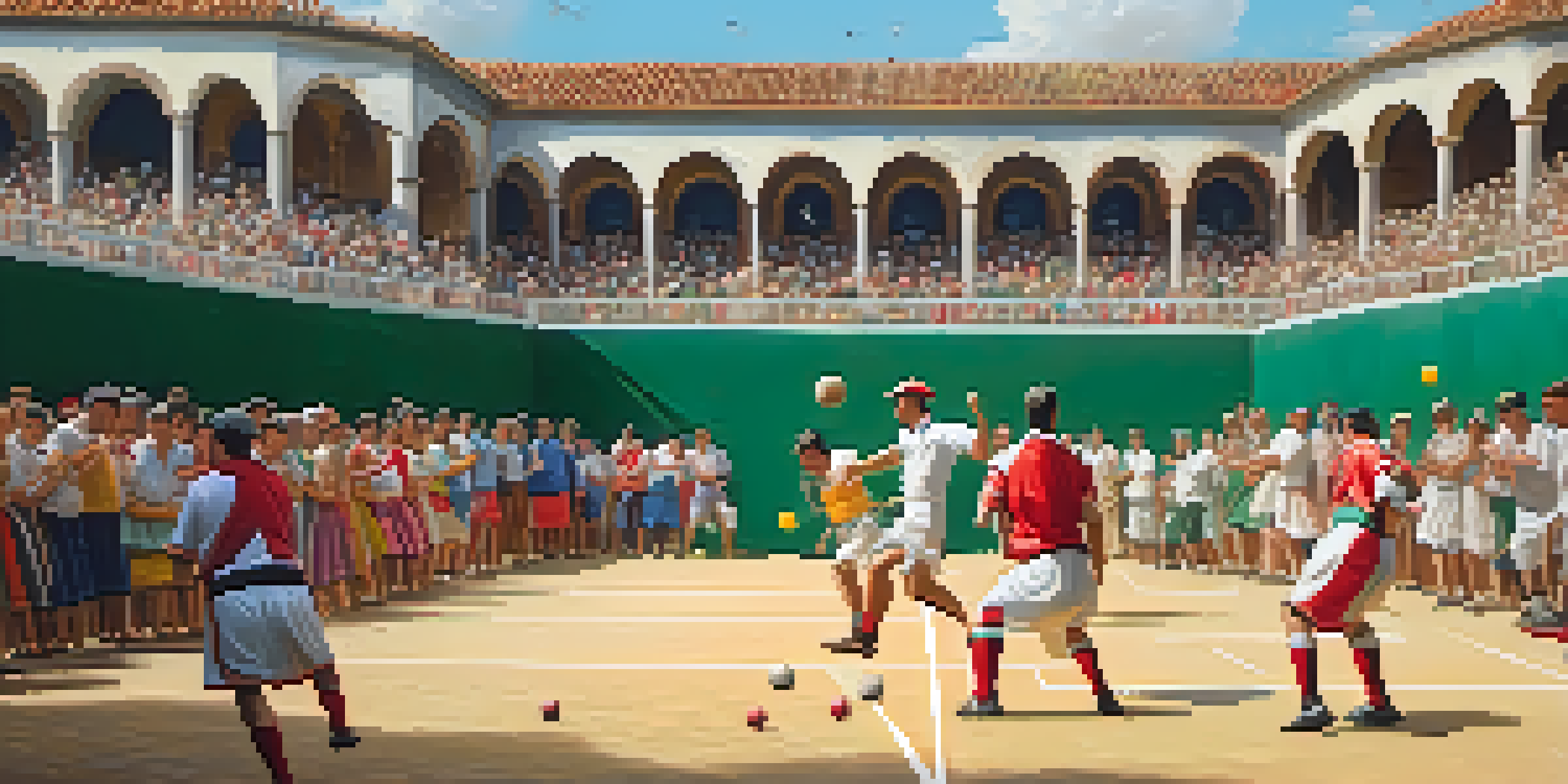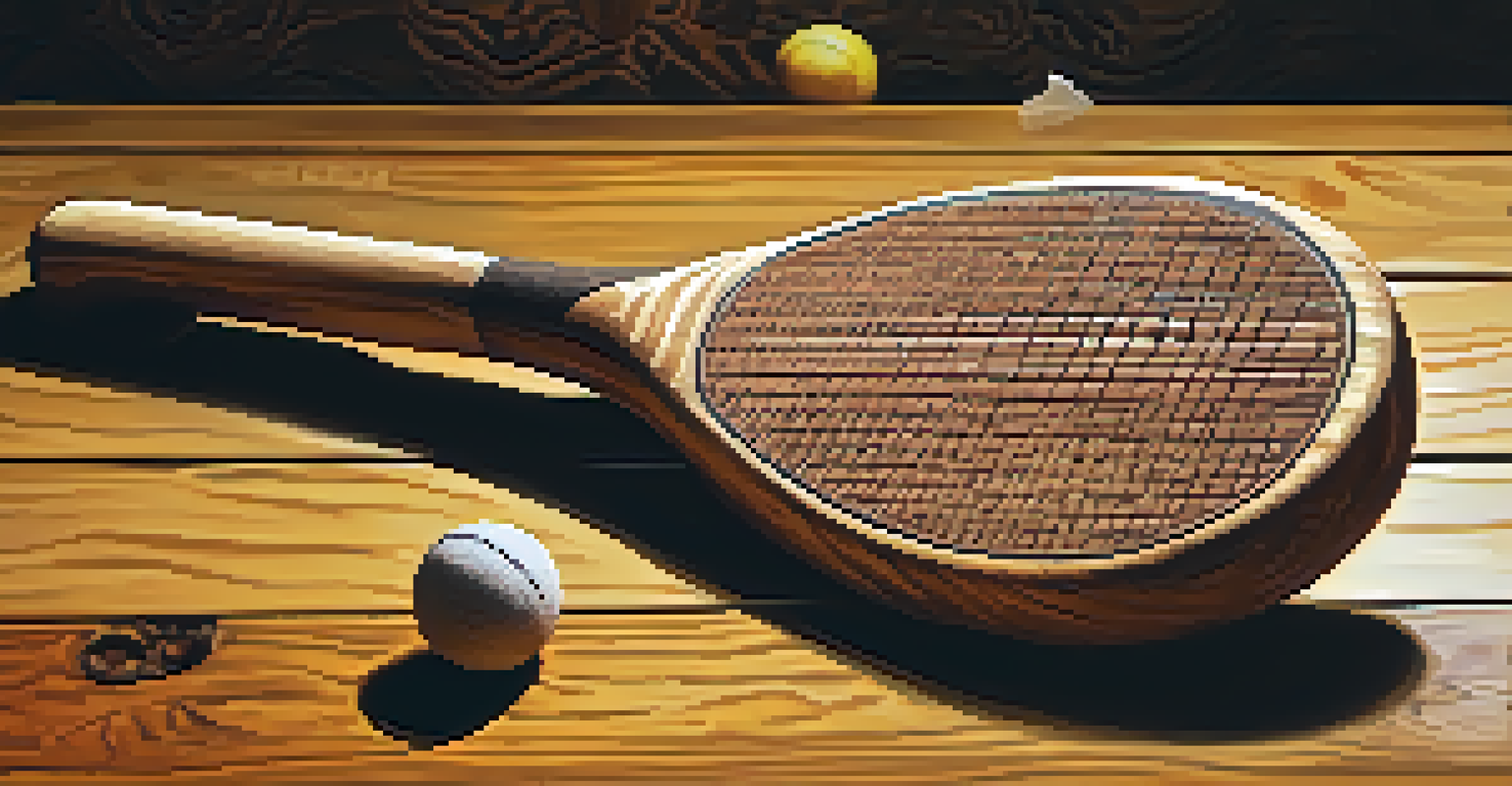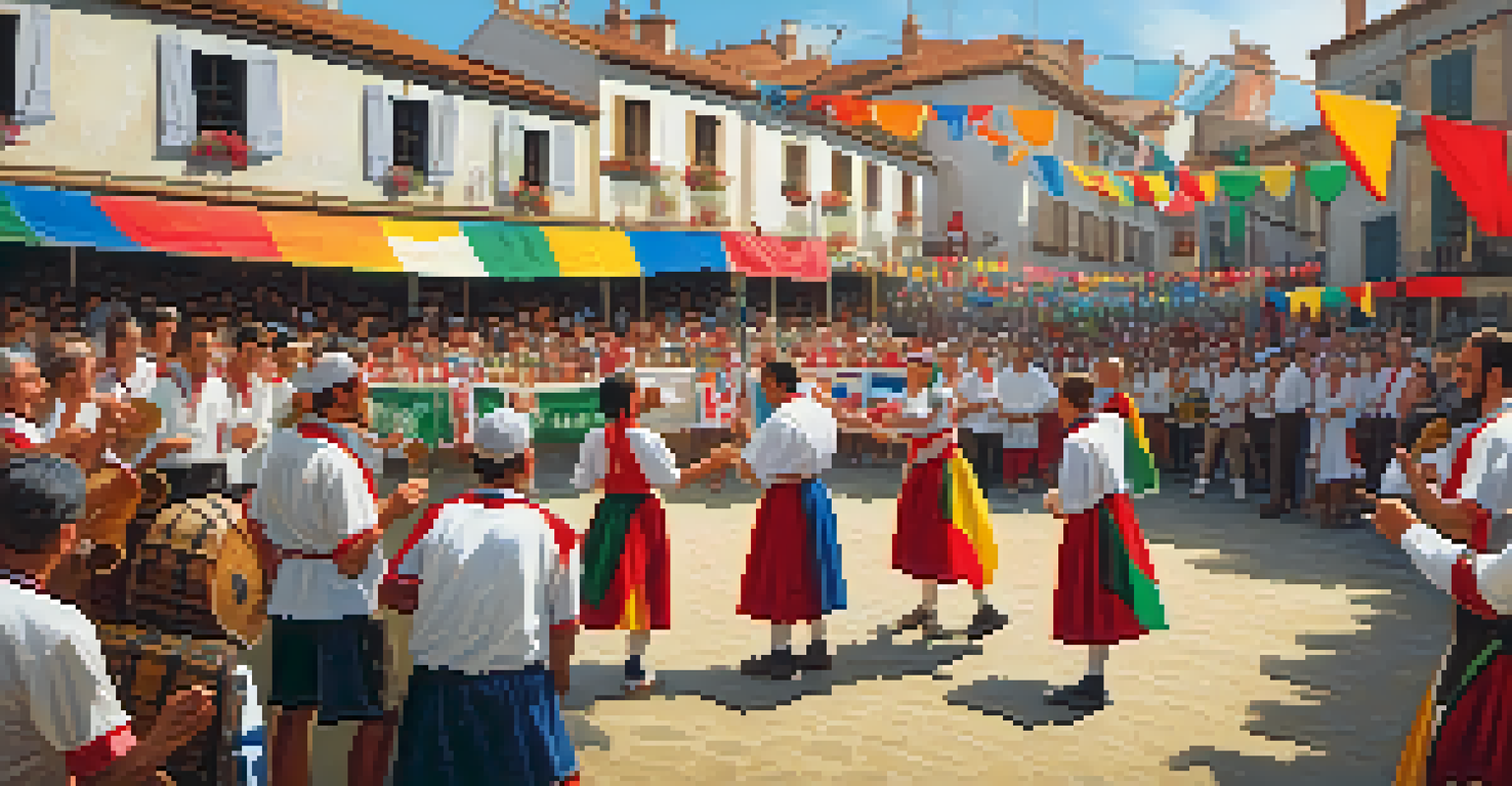Understanding the Rules of Basque Pelota and Its Variants

What is Basque Pelota and Its Historical Background
Basque Pelota is a traditional sport that hails from the Basque Country, a region spanning parts of northern Spain and southwestern France. This game has a rich history that dates back to the 15th century, evolving through the centuries to become a beloved pastime. Much like tennis, it involves players hitting a ball against a wall using their hands or various implements, showcasing both skill and agility.
Sports do not build character. They reveal it.
The sport's deep cultural roots can be seen in its various forms, each reflecting the unique traditions of local communities. For instance, the game was originally played in rural settings, often as a way for farmers to socialize and unwind after long days of labor. Over time, it transitioned into a more organized sport with formal rules and competitions, increasing its popularity across the Basque region and beyond.
Today, Basque Pelota is not just a game; it's a celebration of Basque identity, often featured in festivals and local events. The sport's vibrant atmosphere and community spirit make it a cherished part of the cultural landscape, drawing players and spectators alike into its fold.
The Basic Rules of Basque Pelota
At its core, Basque Pelota revolves around a simple premise: players take turns hitting a ball against a wall, aiming to make it bounce in a way that their opponent cannot return it. Each match is played to a set number of points, typically 22 or 25, and players score points by successfully landing the ball in the designated area. This back-and-forth dynamic creates an engaging and competitive atmosphere.

One key aspect of the rules is the service, which must be delivered from a specific area and must hit the front wall before landing in the opponent's area. Additionally, players must allow the ball to bounce once on their side before returning it, adding an extra layer of strategy and skill. The nuances of these rules can vary depending on the specific variant being played.
Rich Cultural Heritage of Pelota
Basque Pelota is a vibrant sport that embodies the cultural identity of the Basque Country, celebrated through festivals and community events.
Understanding these basic rules not only enhances your appreciation of the game but also opens the door to deeper engagement with its various forms. Whether you’re watching a match or trying your hand at playing, knowing the rules makes the experience much more enjoyable.
Exploring the Variants of Basque Pelota
Basque Pelota isn't one-size-fits-all; it comes in several exciting variants, each with its own unique rules and playing styles. The most common variants include 'Frontón,' 'Pala,' and 'Xare,' each offering different equipment and gameplay experiences. For instance, Frontón is played against a large wall with a hard ball, while Pala uses a wooden paddle to strike the ball, creating distinctive challenges and strategies.
The strength of the team is each individual member. The strength of each member is the team.
Xare, another popular variant, is often played on a smaller court with a softer ball, making it accessible to players of all ages and skill levels. Each variant not only brings its own flavor to the game but also showcases the diverse ways in which the sport can be enjoyed. Players often gravitate toward a specific variant based on personal preference and local availability.
Understanding these variants allows players and fans to appreciate the richness of Basque Pelota as a whole. Whether you’re drawn to the speed of Pala or the finesse of Xare, exploring these different styles offers a deeper connection to the sport and its cultural significance.
The Equipment Used in Basque Pelota
The equipment in Basque Pelota varies depending on the variant being played, but some common elements remain consistent. Players typically use a ball, which can differ in size and material based on the specific game. For instance, in Pala, the ball is often made of rubber, while Xare employs a softer, more lightweight ball, making it easier to handle.
In addition to the ball, players often use specific tools to enhance their gameplay. In Pala, a wooden paddle is used to strike the ball, while in traditional handball, players use their bare hands. This variation in equipment adds to the uniqueness of each game, influencing how players approach their strategies and techniques.
Diverse Variants and Gameplay
The sport features several exciting variants like Frontón, Pala, and Xare, each offering unique equipment and playing styles.
Understanding the equipment not only helps newcomers feel more comfortable but also highlights the craftsmanship involved in creating these tools. Many players develop a connection with their equipment, as personalized paddles and balls can enhance performance and add a sense of identity to their play.
Scoring and Winning in Basque Pelota
Scoring in Basque Pelota is straightforward yet thrilling, adding to the excitement of matches. Players earn points when their opponent fails to return the ball, with scoring typically going up to 22 or 25 points, depending on the rules of the specific variant played. The first player or team to reach the designated score wins the match, creating an exhilarating atmosphere.
Tactics come into play during scoring, as players must decide when to play aggressively and when to be more defensive. This strategic element keeps the game exciting and unpredictable, as every point can shift the momentum. Spectators often find themselves on the edge of their seats, cheering for their favorite players as scores change rapidly.
Understanding how scoring works enhances the overall viewing experience, making it easier for fans to follow along and appreciate the skill involved. Whether you're a player or a fan, immersing yourself in the scoring system adds another layer of enjoyment to the game.
The Role of Community and Culture in Basque Pelota
Basque Pelota is more than just a game; it’s a vibrant cultural phenomenon that brings communities together. Local tournaments and festivals often showcase the sport, creating a sense of unity among players and spectators. This shared passion for the game fosters camaraderie and pride, making Basque Pelota a significant part of the region's identity.
The sport also serves as a platform for storytelling and tradition, with each match often accompanied by local music and celebrations. Fans relish the opportunity to come together, share experiences, and build lasting memories around the sport. This communal aspect of Basque Pelota makes it more than just competition; it’s a celebration of culture and heritage.
Accessible and Engaging for All
Getting involved in Basque Pelota is easy, with many local clubs offering beginner classes that foster community and skill development.
Engaging with the cultural side of Basque Pelota enriches the experience for everyone involved. Whether you’re playing or watching, the sense of belonging and shared history creates a profound connection to the sport that goes beyond the game itself.
Getting Involved: How to Start Playing Basque Pelota
If you’re intrigued by Basque Pelota and want to join in on the fun, getting started is easier than you might think! Many communities offer beginner's classes or local clubs where newcomers can learn the basics and play with more experienced players. This is a great way to meet people, improve your skills, and immerse yourself in the sport's culture.
As you start playing, remember that practice is key. Spend time refining your techniques, whether it’s mastering your serve or perfecting your return. Don't get discouraged by the learning curve; every player has been a beginner at some point, and the joy of improvement is part of the journey.

Lastly, don't forget to soak in the experience of being part of this unique sport. Whether you're playing casually with friends or participating in organized matches, the connections you make and the skills you develop will enrich your appreciation for Basque Pelota.